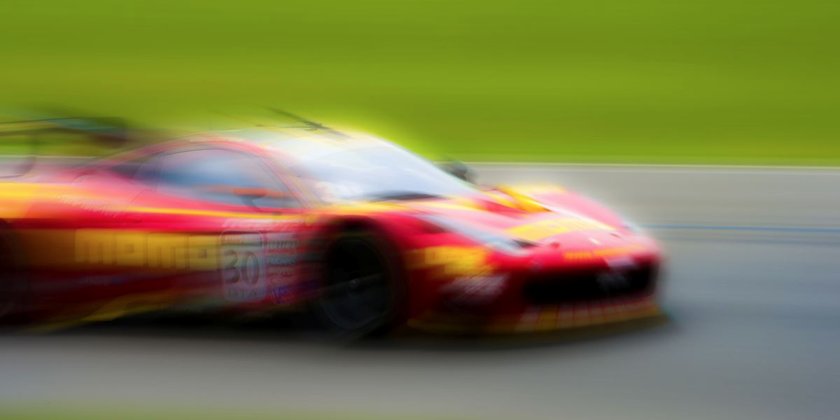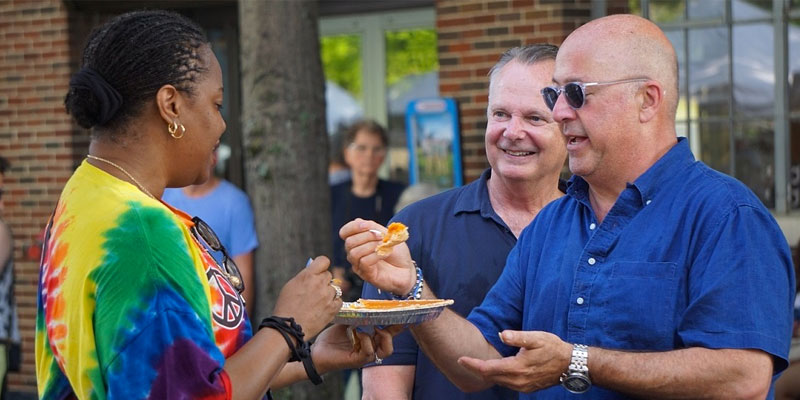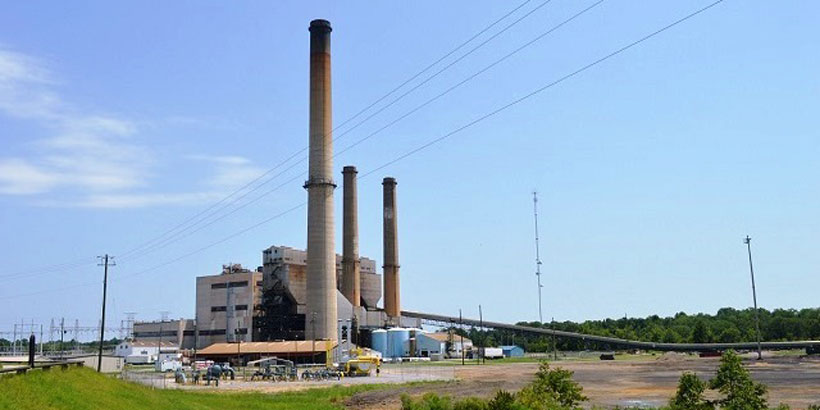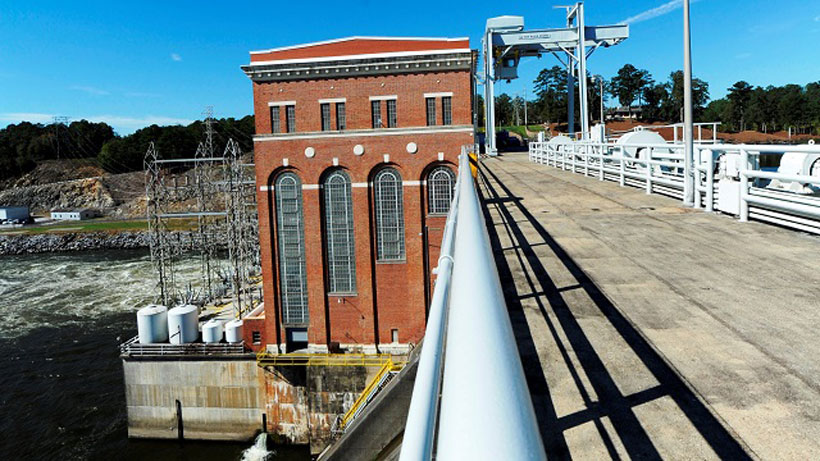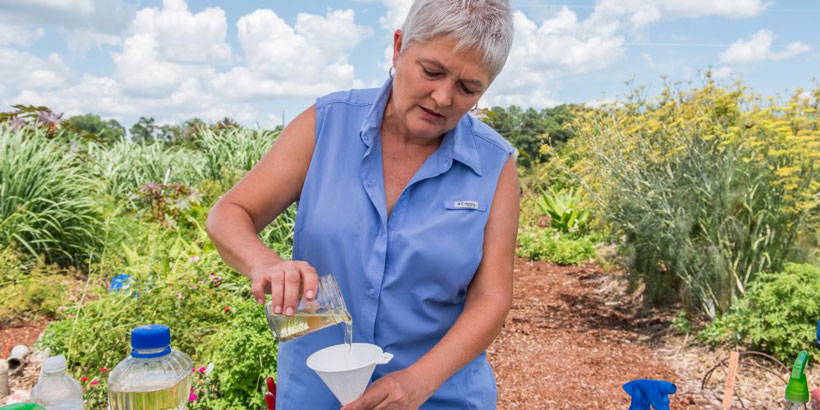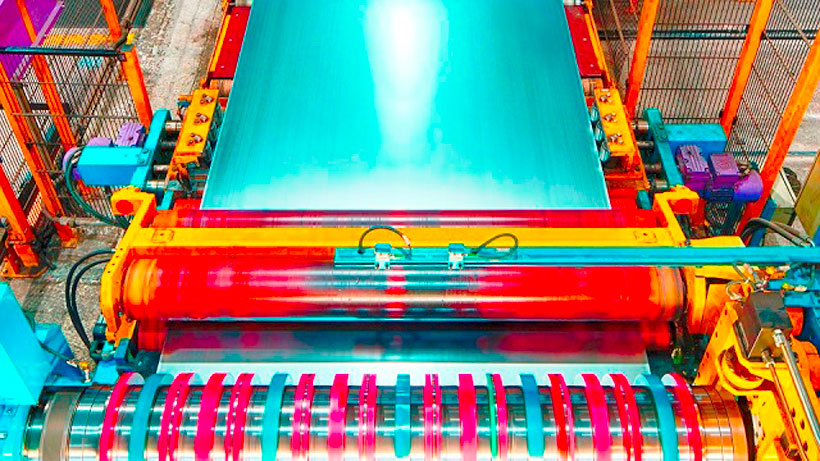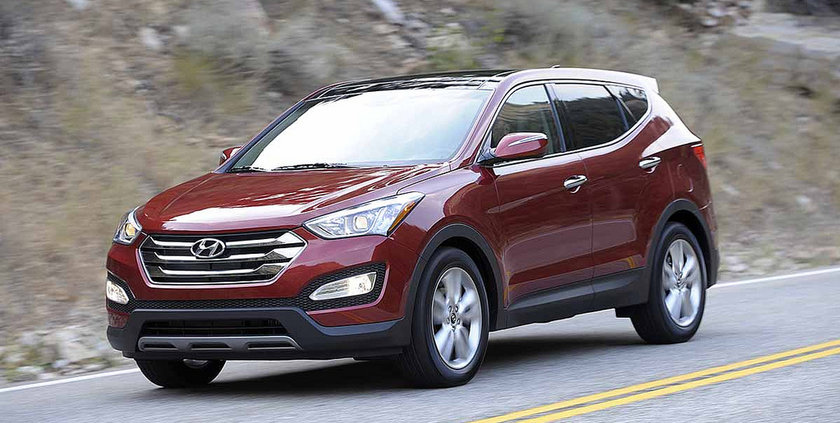There was a time when the name “Barber” was synonymous with milk and dairy products in Birmingham and throughout the South. Now “Barber” is the cream of the crop in racing venues with the world-class Barber Motorsports Park and the world-record motorcycle collection and museum that is part of its ever-growing campus.
That’s due to the vision and philanthropy of George Barber, the former racecar driver and milk magnate who now operates a successful real estate company in addition to bankrolling the 830-acre Barber Motorsports Park.
Fueling the state’s economy
The Greater Birmingham Convention & Visitors Bureau estimated last year that the Barber Motorsports Park has had $1.3 billion economic impact on the state, including generating $122 million in state and local taxes.
“According to the tourist bureau, they said since we’ve been open – which has now been about 11 or 12 years – that we’ve generated $1 billion, that’s a ‘B’ , $1,300,000,000 worth of tax advantages, benefits, etc. to the state and to the city,” Barber said. “That’s doing something and all of us are real proud of that.”
It’s a total that increases with each event at the park.
In April, more than 75,000 fans came to Barber Motorsports Park for the Honda Indy Grand Prix of Alabama, which the convention and visitors bureau estimates had a $33 million economic impact. That was followed up earlier this month with the first-ever Barber Historics event featuring vintage racecars, which brought millions more to the local economy.
“Of the great things in our community that stand out as truly world-class, the Barber Motorsports Park is certainly at the top of that list,” Brian Hilson, CEO of the Birmingham Business Alliance, said. “It also has a strong international flavor, which is always helpful when it comes to economic development. It draws people from across the U.S. and around the world. We often hear, ‘Wow! I had no idea you had this here in Birmingham.’”
The various public and private events at the track draw hundreds of thousands of visitors to Barber Motorsports Park each year. In addition to the Indy Grand Prix of Alabama and the Barber Historics, this year will see public races with next month’s MotoAmerica motorcycle race June 12-14 and the Barber Vintage Festival Oct. 9-11. More than 100 other private events have taken place or are scheduled at the park this year.
The Porsche Sport Driving School is based at the park and hosts a number of classes each year that draw students from across the country and around the world. There is the new Barber Proving Grounds, where companies like Mercedes-Benz can bring in their representatives from all over the world to put their cars through a series of extreme tests.
The power of vision
At the heart is the 144,000-square-foot Barber Vintage Motorsports Museum, which is really where all of this started.
“I never dreamed that it would be this big and this successful when we started,” Barber said. “I just started having a lot of fun with these motorcycles and got to the point where, oh, I guess we had 50 or 100 bikes and I thought, ‘Gee, with a little luck I can put together the best motorcycle collection in the world and I would have it here in Birmingham, have a lot of fun doing it and do something for the city.’”
Jeff Ray, executive director of the Barber Vintage Motorsports Museum, recalled when the former milk magnate shared his initial vision.
“I never will forget a conversation with Mr. Barber,” Ray said. “He said, ‘I want to collect bikes.’ I said, ‘Great! What kind?’ He said, ‘Motorcycles.’ I said ‘Yeah, but what kind?’ I’m thinking marques like Triumph or Harley Davidson. He looks at me and said, ‘Jeff, the type with two wheels.’ That’s how broad his thinking is.”
The first museum started in a warehouse in downtown Birmingham in 1994. Barber would repair and maintain vintage bikes and run them in races against other vintage bikes across the country.
“It gave us experience but it also gave us credibility within the motorcycle collection community,” Ray said.
Barber also donated some motorcycles for the “Art of the Motorcycle” exhibits in New York, Chicago and Spain. The show was such a hit that Barber began to believe a permanent display could be popular for Birmingham. The collection soon outgrew the small warehouse and Barber tasked Ray and his team with finding a site to build a new, larger museum to better showcase the collection.
With the initial guidance to find 40 acres for a 100,000-square-foot building with interstate access and a budget that Ray now laughs at, Ray and the team found the site that today is home to Bass Pro Shops.
“We came out to look at that site and Mr. Barber, being the forward thinker that he was, said, ‘This site is nice, but what about all of that property behind it?’ He was referring to where we’re at now,” Ray said.
Barber wanted the museum to be a living museum and have “a small track through the woods” to run the restored and maintained bikes. The 40 acres grew to 700 acres and today the park has 830 acres.
“The track started as a small little track to test the restoration on. It didn’t take long for me to realize I needed to do a little bit better and a little bit better and then I realized to get people here to Birmingham to a racetrack, it had to be first-class,” Barber said. “It couldn’t be just an ordinary racetrack. So, we built it right the first time and we’ve added, gee, 16,000 azaleas, 18,000 crepe myrtles, 800,000 bulbs. So they call it the Augusta National of racetracks for a reason.”
Drivers and enthusiasts marvel at the track.
“What we wound up with at the end of the day was a 2.38-mile road course,” Ray said. “It’s got about 80 feet of elevation change. It’s 45 feet wide. We’re also a Formula One-approved test facility. What we’re able to do now with this is to bring AMA pro racing to Birmingham, bring Indy Car racing to Birmingham and we’ve been able to develop some of our own programs.”
What was to be a 100,000-square-foot museum ended up as the current 144,000-square-foot, five-story attraction.
Holding a record collection
“Right now it houses the largest collection of motorcycles in the world,” Ray said. “We’re right at 1,450 motorcycles. We display about 700 bikes on any given day. We constantly rotate different bikes through.”
The museum has added a new pedestrian bridge that extends out over the racetrack for a unique view of the race, including a see-through floor over the track.
More than 70,000 square feet will be added to the museum with an expansion this year.
“That allows us to expand the car exhibits, the motorcycle exhibits and to do some more design-built, purpose-built event space as well,” Ray said.
The added space will also allow them to emphasize the “museum” in the venue’s name, Barber said.
“People really get enough of motorcycles after a while, so we’re thinking and we’re working with the Birmingham Museum of Art downtown to maybe have Alabama works of some type – photographs or pottery or whatever – here on one of our floors to have something a little different to lure the guy who really doesn’t have that much interest in bikes,” Barber said.
Barber’s own interest in motorcycles came after he raced Porsche racecars for 11 years. After doing his own work on his racecars, he came to appreciate the engineering and various approaches motorcycle racers would take to improving their bikes. Barber’s own racing days were cut short by the need to take over the family business in Birmingham.
“I had to stop racing in 1970 because my dad died and I had to start racing the milk business,” Barber said. “I can assure you it’s a helluva lot more dangerous than racing Porsches.”
But Barber got nostalgic and started looking for the old Porsche RSK and 904 cars he used to race. The 904 that he originally paid $7,500 including shipping from Europe was now $1.2 million and the RSK was close to $3 million. Barber figured that while he would enjoy it, most people wouldn’t be interested in seeing two silver Porsches.
“With that kind of money I could put together the best Lotus racecar collection in the world,” Barber said. “And I have and I’ve got some money left over. They’re much more interesting to the average guy to see the different steps that were taken in developing the Lotus cars.”
Larger than racing
Today, the Barber Motorsports Park is an established venue in the racing world and the museum is becoming a must-see site for visitors to Birmingham.
“One of the things we were missing when we opened was heritage,” Ray said. “We have quickly gained heritage and reputation. I hope the reputation that continues to grow is our family orientation. This is a facility that welcomes families and it’s a place that families can come to. We’re an entertainment venue.”
Barber enjoys walking through the museum and marveling at the engineering and design that has gone into each generation, nationality and maker of motorcycles. But don’t ask him to pick a favorite.
“You know, you don’t have a favorite child,” he said. “If I had to pick a group, though, mainly because of John Surtees and our relationship with him, it would be his car and his bikes that he used to win the world championships with. You know, they have so much meaning and accomplished so much, these machines. They went all over the world.”
As Barber Motorsports Park itself becomes known “all over the world,” what does Barber hope is remembered decades from now?
“I think the Guinness Book of World Records said it. They said we’re the world’s largest motorcycle museum and I think that’s good,” he said. “I guess I would like for people to say it’s a very important feature of Birmingham, Alabama. Come to Birmingham to see this.”




